Driving a handful of screws with a manual screwdriver isn’t a big deal. But it can be exhausting if you’re working on a bigger project, especially driving a lot of screws in a hard material. In this post, we will learn how to use a drill as a screwdriver.
It happened to me when I was making a cupboard for my home. I laid out all the pieces and started to assemble them but soon realized it would be a tedious, time-consuming task. I used my existing regular drill machine to drive some screws, but they were breaking. However, with a little bit of practice, I completed the project. Later, I purchased a proper power screwdriver.
I have experienced both types of drill machines with and without torque for screwing and learned many things throughout this period. So, let’s discuss what you need to consider when using a drill machine for driving screws?
Also read: how to avoid wood splitting when driving screws.
How to Use a Drill as a Screwdriver – Guide
Tools and Materials Needed
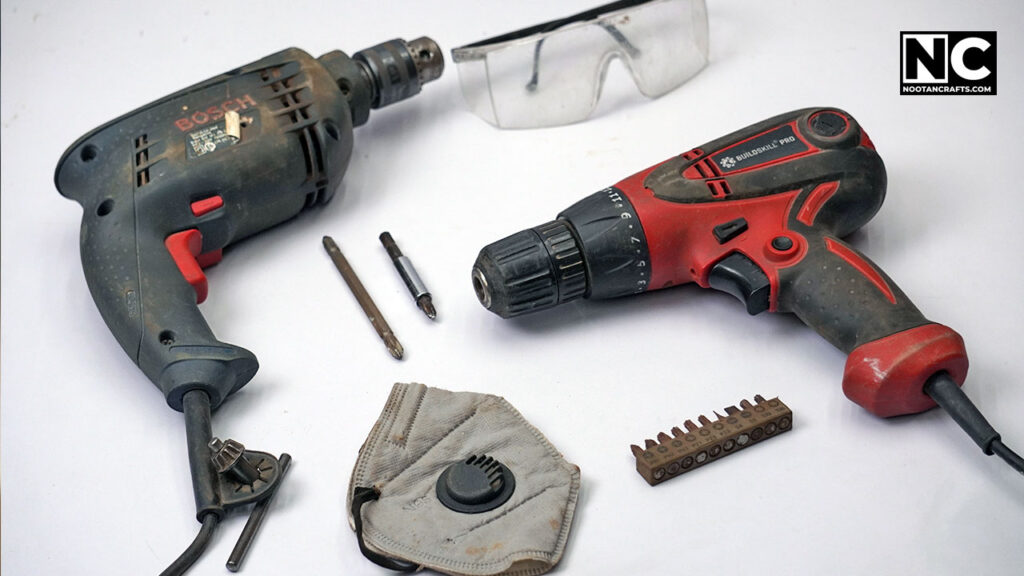
Here is the list of the tools we will need during our practice.
- Drill: Either corded or cordless
- Screwdriver bits: Various types for different screws
- Screws: Appropriate for your project
- Safety equipment: Goggles and gloves
Choosing the Right Drill
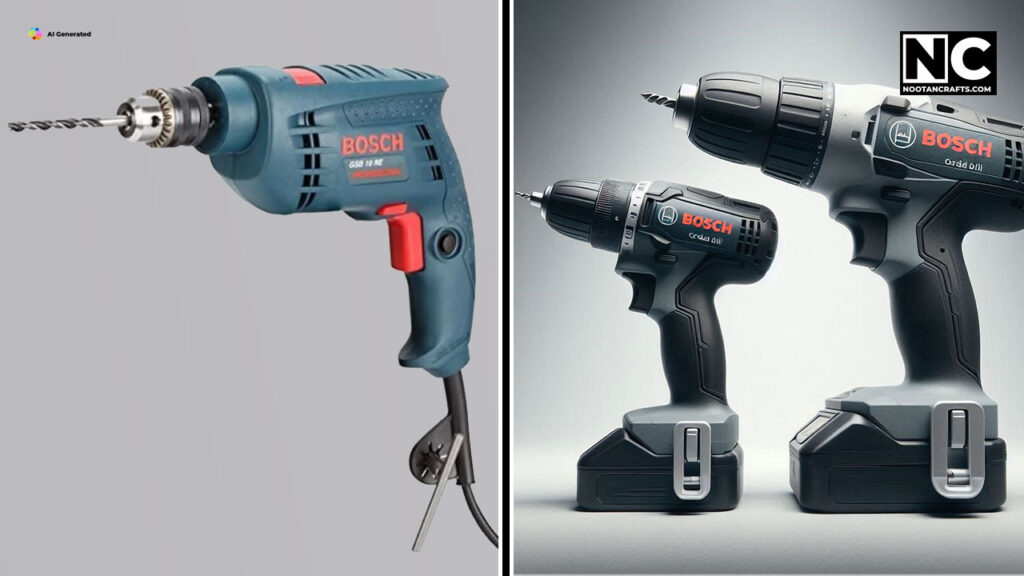
From a broader perspective, there are two main types of drill machines: corded and cordless.
Corded Drills: These machines are ideal for heavy-duty tasks that require constant power, but their cord limits mobility. However, they are the best choice if you’re on a shoestring budget.
Cordless Drills: They offer great mobility and are perfect for tasks around the house. However, you will need to replace their batteries from time to time, and they are a bit more expensive than regular drills.
An Essential Feature – Custom Torque Setting
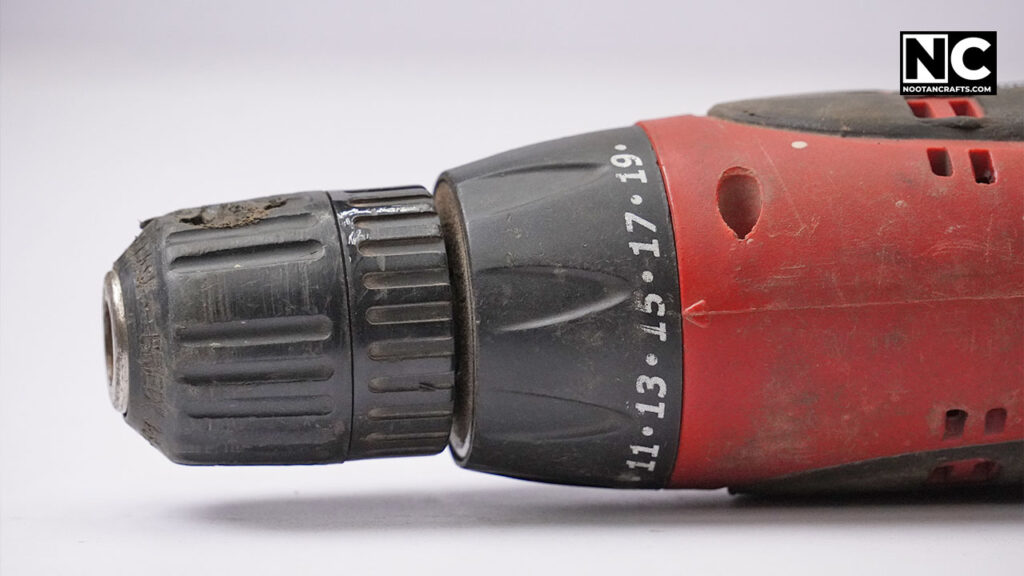
Drills with Torque Settings: Torque is a force that drill applies when driving a screw. Drills with custom torque settings allow changing it, which is crucial for preventing over-tightening and stripping screws. Nowadays, most cordless drills offer an adjustable torque setting.
Drills without Torque Settings: Many corded drills lack this feature, which means they can apply too much force and rotate too fast, which can strip threads or even break the screw. However, some machines offer variable speed control, but it’s not enough to drive a screw properly.
Be aware because sometimes, If the drill jams, it can bend your hand and cause injury. A side handle can help manage this, but high-torque drills can still pose risks.
However, with experience and subtle speed control, you can technically use these drills to drive screws. You must release the power button just before the screw is about to tighten fully to avoid over-driving.
Selecting the Right Screwdriver Bits
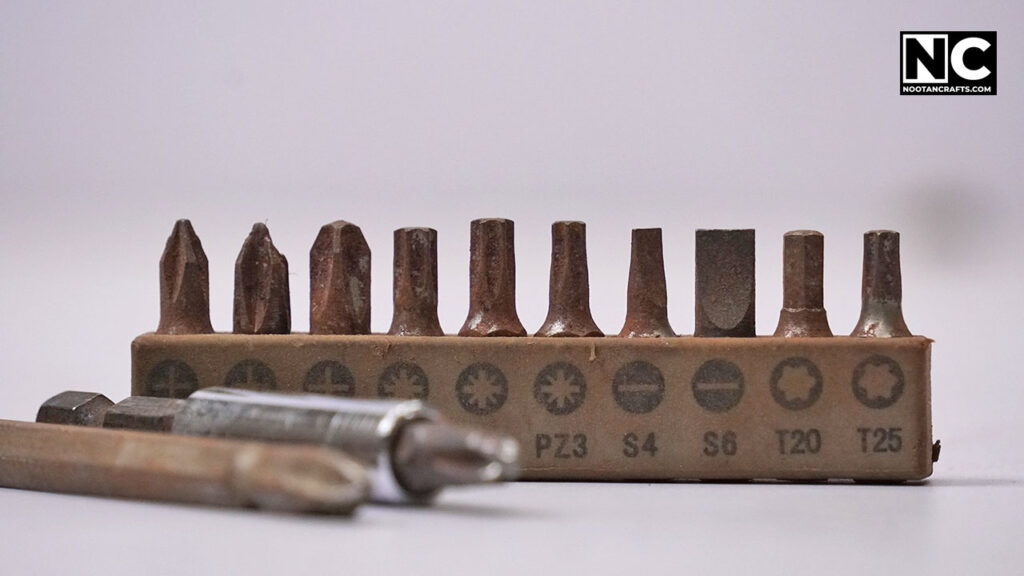
Now you need to choose the right types of driver bit according to your screws; here are some most popular screw head types.
- Flathead: For slotted screws
- Phillips: For cross-shaped screws
- Torx: For star-shaped screws
- Hex: For hexagonal screws
It’s evident using the wrong bit can damage both the bit and the screw, so always choose the right type and especially the correct size.
Using a Drill as a Screwdriver
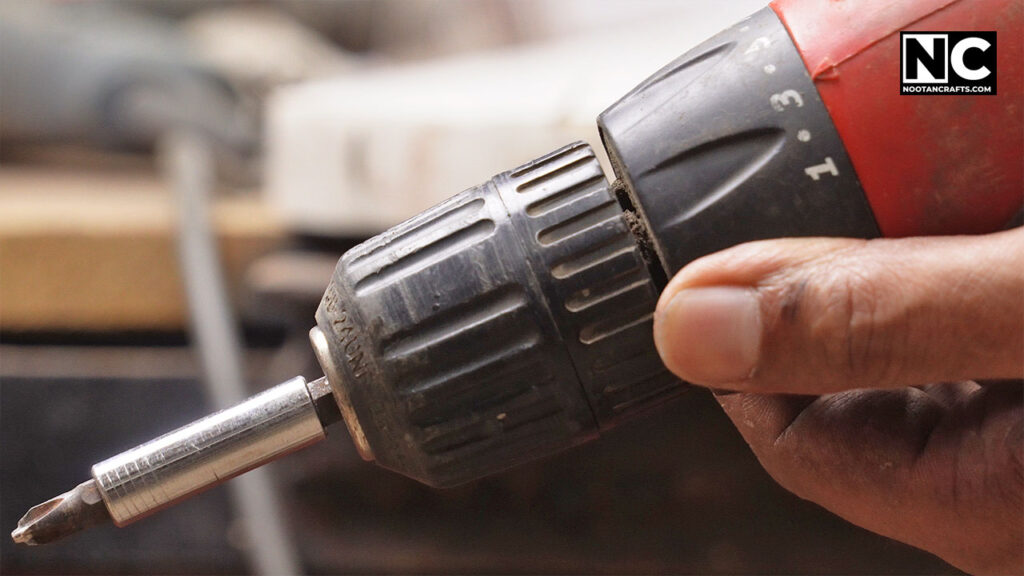
After you have gathered all the items, now it’s time to drive some screws.
Attach the Screwdriver Bit: Insert the screwdriver bit into the chuck as you would a regular drill bit and tighten it properly.
Adjust the Torque Setting (If Available): The setting ring is usually located near the chuck with numbers printed on it. In the starting, set the torque to the lowest; this prevents over-tightening and stripping the screw.
Special Note: If your screw is stopped mid-way, then you should increase the torque and try again (repeat it) until you find the perfect setting which fully inserts the screw. Now you can quickly drive multiple screws on the same setting. Remember, if you work with other materials, even with the same screws, the torque setting needs to be changed.
Techniques for Using a Drill as a Screwdriver
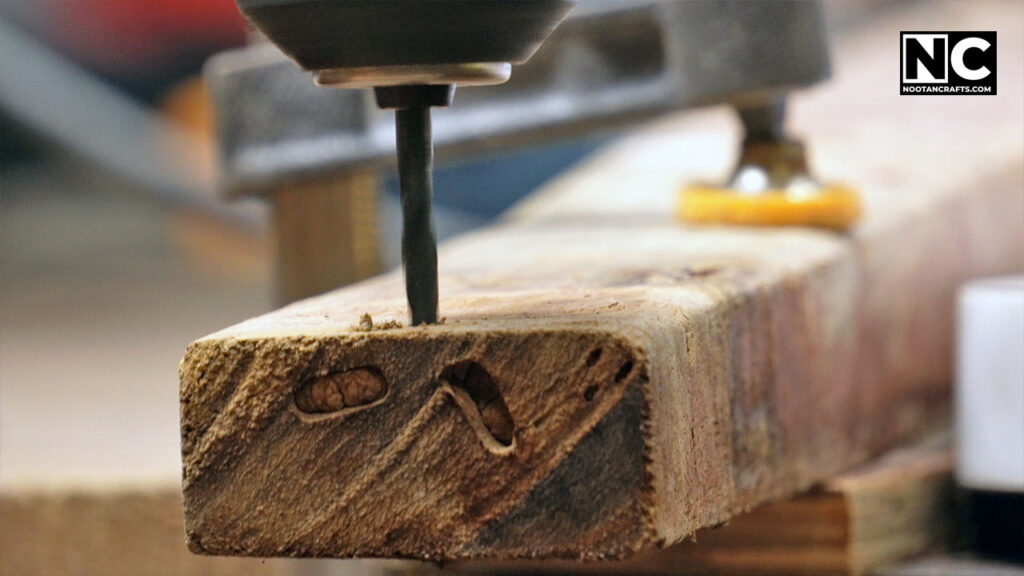
Pre-drilling Holes: A pre-drilling hole is necessary for hard materials like hardwood or metal. It prevents splitting and makes driving screws easier. I have written a dedicated post regarding how to stop wood splitting when screwing.
How to Pre-drill – Attach a slightly thinner drill bit than your screw diameter in the drill machine. Now, make a pilot hole with it, which will help the screw to penetrate easily.
Inserting and Removing Screws
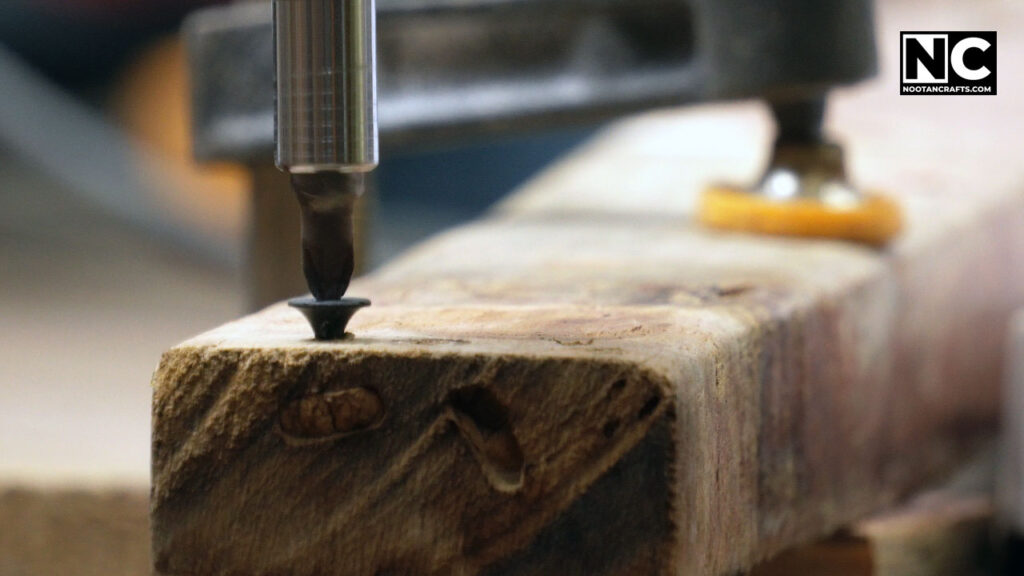
Now it’s time to use our drill machine to drive screws finally. Steps are followed.
- Align the Bit: Place the bit in the screw head.
- Apply Pressure: Apply firm, even pressure to the machine to keep the bit in place and prevent it from slipping.
- Drive the Screw: Slowly squeeze the trigger, allowing the screw to drive in at a steady pace. If you’re using a drill without torque settings, you must release the power button just before the screw is fully tightened to avoid over-driving. However, it requires a bit of practice.
- Removing Screws: To remove the screw, set the drill to reverse and follow the same steps.
Tips for Avoiding Common Mistakes
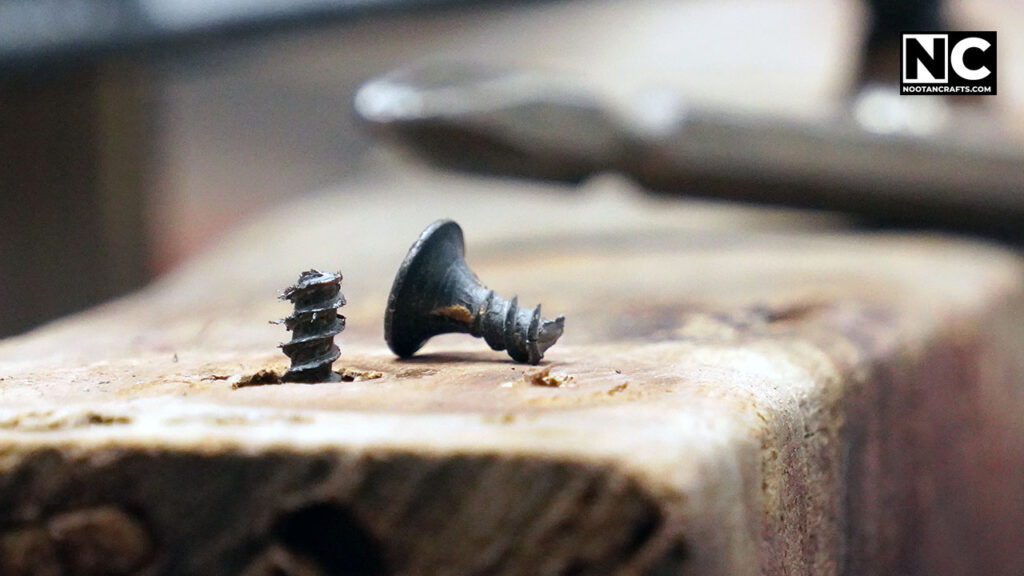
Preventing Stripped Screws: Keep the torque setting lower to avoid screw stripping, and gradually increase it according to the requirements.
Slipping Bit: If the drill bit is slipping, apply constant pressure on the machine. It usually happens with a flathead screw. You may consider using the Philips head or other screw with a better grip.
Safety Tips: Always wear goggles and gloves to protect yourself from flying debris/dust, even sometimes screws slip, which can potentially cause injury. Always hold the drill with a tight grip for better control and stability. Also, keeping the workspace clean may reduce accidents.
Maintenance and Care for Your Drill
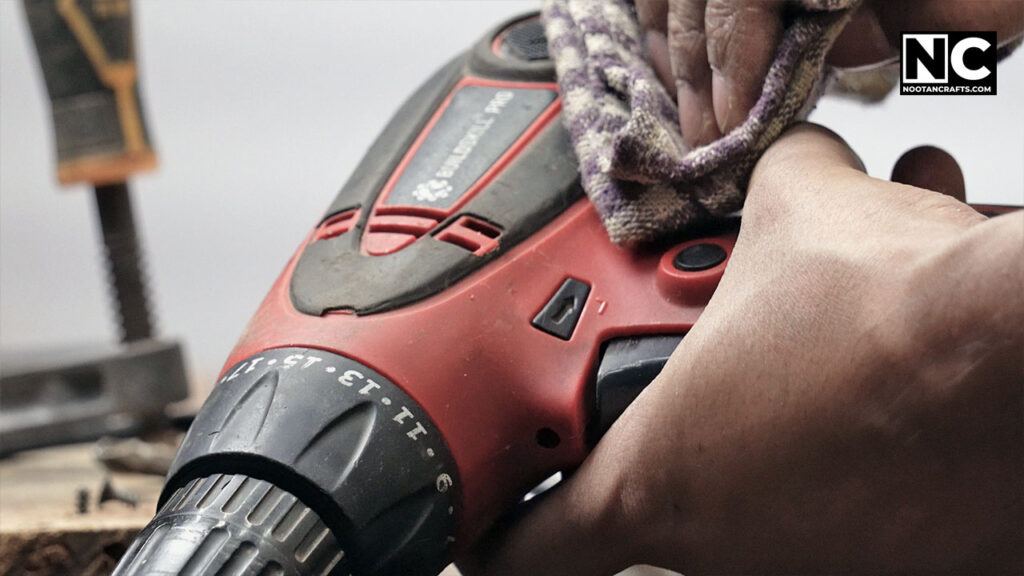
To ensure optimal performance and longevity, take care of your machines.
Cleaning and Storing: Always wipe down your drill machine after each use and store it in a dry place.
Checking and Replacing Bits: Watch your drill bits for wear. If necessary, replace them.
Battery Maintenance: To ensure optimal performance and lifespan, keep the batteries charged for cordless drills and avoid complete discharge.
General FAQs
Yes, but a drill with variable speed and an adjustable clutch is the best choice.
Start low and increase as needed. For drills without torque settings, stop just before the screw is fully tightened.
Make sure you’re using the correct bit size. Apply steady pressure and secure the bit in the chuck.
Yes, use a lower torque setting and pre-drill holes. For drills without torque settings, use subtle speed control and stop before fully tightening.
Conclusion
Using a drill machine to drive a screw is straightforward. You need to remember a few things in mind, like using the correct bit, adjusting torque settings, and keeping consistent pressure on the machine.
Keep practicing and keep learning. If you have any issues, comment below. Thanks for reading. Until next time, keep crafting.
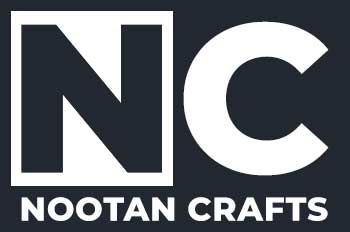
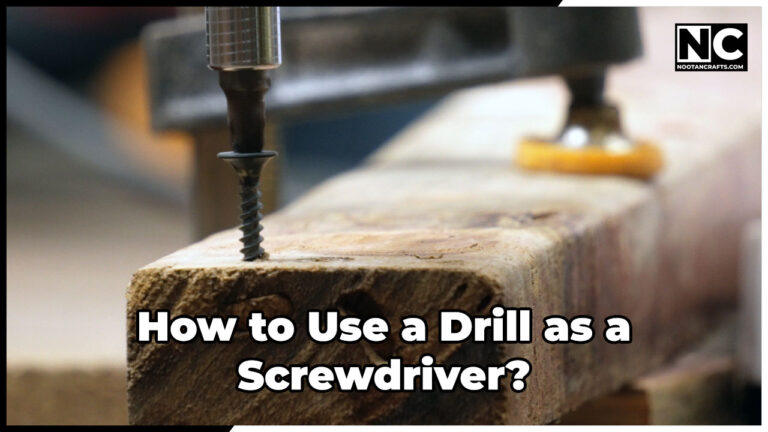
Thank you
I appreciate the detailed guide! I’ve noticed that battery management is key when using cordless Bosch drill machines. Keeping a second battery charged and ready can save a lot of downtime, especially on bigger projects. Also, it’s good to avoid overcharging the battery to extend its lifespan.
Why don’t people purchase hammer drill drivers like Dewalt?